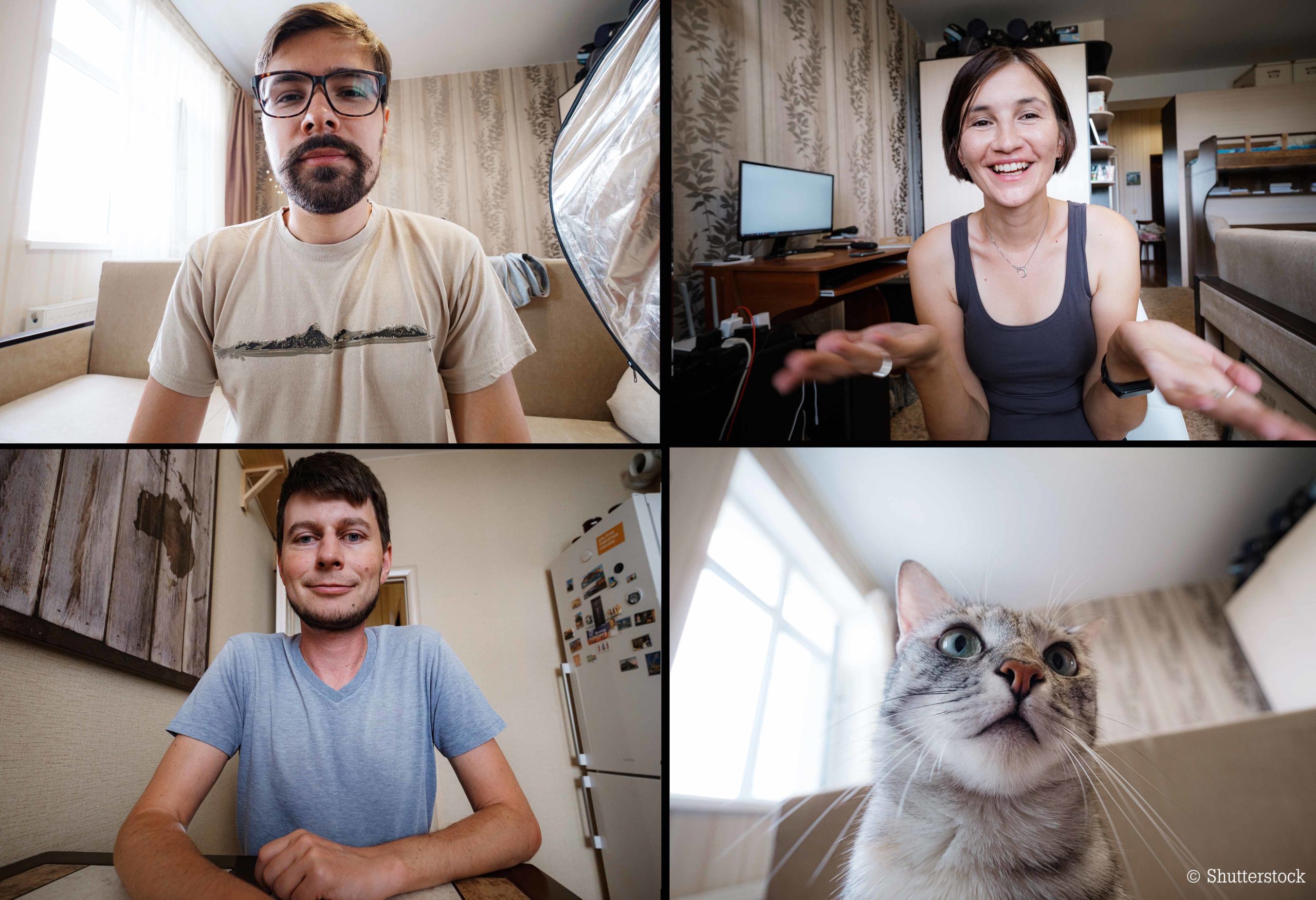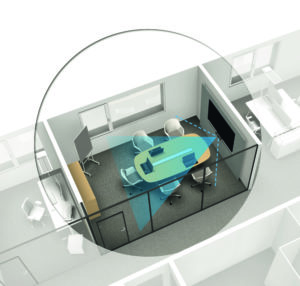How to look good for video conferencing
By Franz Gurtner, 02.03.2022

Organisation consultants have been promoting remote communication via video conferencing for many years now. The advantages are undisputed – reducing travel saves time and costs and protects the environment: two flights from Vienna to London produce more CO2 than the complete equipment for a conference room throughout its entire life cycle. Nevertheless, a pandemic had to happen before the idea of remote meetings was kissed awake and immediately hit the limelight. Speaking of the limelight: not all participants are aware that certain quality criteria apply just as much to their online presence as to their physical, face-to-face conversations. Below you can find some recommendations on how to look good during video talks.
Modern collaboration technology as basic requirement.
Oops! The picture’s jerky, the sound cuts out, or the meeting only starts after a 15-minute delay because the dial-in doesn’t work. But this doesn’t have to be the case: technology companies have achieved a great deal in recent years and months in hard- and software for conferencing. They now provide sophisticated, easy-to-use products of high video and audio quality. The prices – especially in the professional sector – are significantly lower than they were ten years ago. But we are still left with the issue of the Internet connection: stable lines and sufficient bandwidth are basic requirements for quality online talks. It’s not possible to make a general statement about the transmission rate since it depends heavily on the type of work and the applications. To be on the safe side, you can refer to the provider in order to guarantee the highest – but admittedly the most expensive – bandwidth.
Positive prevailing mood thanks to a creatively designed setting.
The first impression counts – also online: and this first impression starts with you – for more than fifty percent of communication proceedings are enacted non-verbally. For example, if you stage your video meeting from your home office wearing your pyjamas, it may (or may not) go down well in a team meeting with your workmates. But for more formal meetings take care to maintain an appropriate dress code. Your outfit, like the background design, has a considerable influence on visual mood and transmission quality. Strong contrasts – for instance a black top worn against a white background – should be avoided. Instead, you should wear appealing colours that are not too robust and not overly patterned. The setting can be slightly structured. One or two creative accents – such as pictures or image visuals – catch attention and often break the ice in the talk. Altogether, you should try to establish a relaxed and reassuring atmosphere. This also applies to furniture in the field of vision, a table or shelves for instance.
The ideal spatial setting for hybrid meetings.
Hybrid conferences in meeting rooms with physically present and virtual participants require the tables to be arranged in such a way that the configuration visually supports face-to-face communication between the participants. To put it simply: all participants should be clearly visible on screen. This applies to rooms with both smaller and larger groups. Even if modern conferencing cameras can be focused on the speaker source, constant panning of the camera should be avoided, as it often annoys and can also impair image quality. For the set-up, this means: avoid excessively spread-out table arrangements and place additional microphones for elongated set-ups or larger rooms. And last but not least: do not point the camera directly at bright light sources and windows.
A typical but not ideal-typical set-up in a meeting room for hybrid communication: there should be a distance of two to three metres between the first (occupied) chair and the camera so that the camera doesn’t have to pan. The room camera should be positioned at a height of approx. 120 to 140 centimetres – ideally below the display – to enable a talk at eye level.






